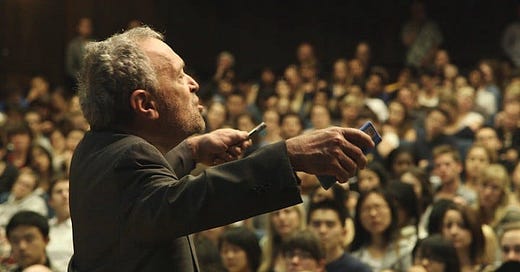‘Inequality for All’ Review

The major image of Inequality for All is a graph, superimposed over a suspension bridge to emphasize its distinctive curve. It depicts the disparity in between the income of the average middle class worker and that of the average wealthy person. It hits two peaks, the first in 1928 and the second in 2007, sloping downward throughout the first half of th…
Keep reading with a 7-day free trial
Subscribe to Nonfics to keep reading this post and get 7 days of free access to the full post archives.



